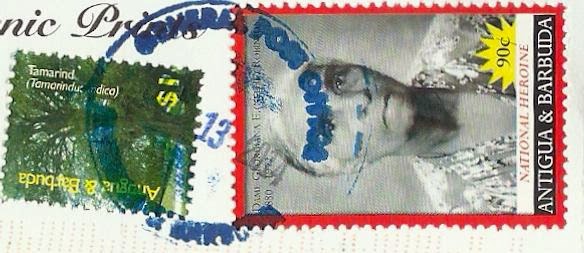Antigua, West Indies
The columned ruins of Nelson's Dockyard overlook the tranquil waters of English Harbour, creating a scene of remarkable beauty.
Sent by Ante from Antigua and Barbuda.
The Nelson's Dockyard was the former naval dockyard for the British Navy in the Leeward Islands of the Eastern Caribbean. It was established in English Harbour in the late 1720s and closed as a military installation in 1895. The narrow deep bays that comprises English Harbour are almost completely encloses by hills that provided the navy a safe, defensible harbour that was ideal for careening and repairing the wooden ships of war and for shelter during the hurricane season. This was a strategic advantage to the British as they were able to maintain a strong military presence in the Eastern Caribbean. With the loss of its North American colonists in 1776, the dockyard at English Harbour grew in importance as a station for repairs and provisions prior to the return voyage across the Atlantic to Britain; particularly so for battle damaged vessels. Naval tradition dictated that the senior naval officer at the dockyard assumed command and as a result many famous British naval heroes served in and commanded operations of the dockyard. These include, Admiral Lord Horatio Nelson, Admiral Vernon, Admiral Hood. Famous naval officers who visited the station include Admiral Collingwood, Prince William Henry (William IV), George V, and others.
The facility grew in capacity, size and importance over time. To protect it, a considerable investment was made by the British Army in building fortifications, hospitals, barracks, ordnance stores and infrastructure on the hills surrounding the Dockyard. Many regiments were sent to garrison the forts and it is said that about 40% did not make the return voyage, falling victim to the numerous tropical diseases including malaria, yellow fever, and dysentery. Most of these military facilities are today in ruin, but they provide abundant research opportunities for the archaeologists and museum curators. The Dockyard was finally abandoned as a British Naval outpost in 1889. For the next fifty years the old naval dockyard was used by Antiguan seamen and boat builders from the village of English Harbour as a careenage and repair facility for their wooden sloops and schooners that traded and provided inter island transportation. It was also used as a training facility for the West Indian soldiers prior to overseas service during both World Wars.
The site is now a protected area; the premiere National Park of Antigua that was established by the National Parks Act, 1984 and is managed as a heritage tourism site. (Source)











